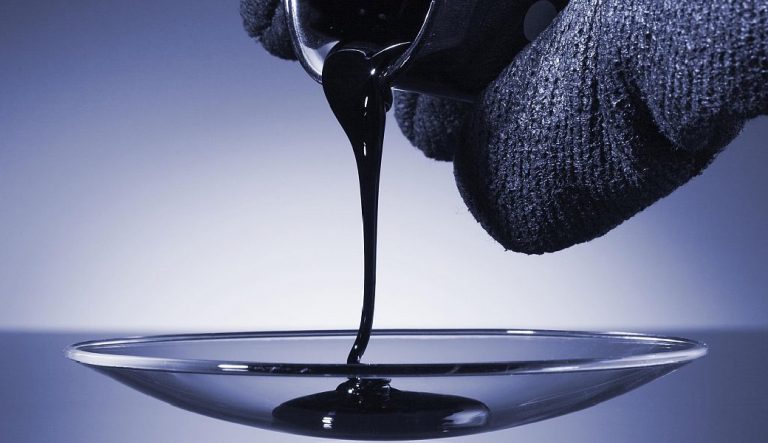Coal, gas to liquids and synthetic fuel
Coal is similar in origin to oil shales, but typically formed from the anaerobic
decay of peat swamps and relatively free from non-organic sediment
deposits, reformed by heat and pressure. To form a 1-meter thick coal layer,
as much as 30 meters of peat was originally required. Coal can vary from
relatively pure carbon to carbon soaked with hydrocarbons, sulfur, etc.
(For synthesis gas, see also chapter 7.3.)
I
t has been known for decades that synthetic diesel could be created from
coal. This is done, first by creating water gas as synthesis gas by passing
steam over red-hot coke. The reaction is endothermic and requires heating:
C + H2O → H2 + CO
More hydrogen is produced in the water gas shift reaction:
CO + H2O → H2 + CO2
Often two stages are used: a high temperature shift (HTS) at 350 °C with
catalyst iron oxide promoted with chromium oxide, and a low temperature
shift (LTS) at 190–210 °C with catalyst copper on a mixed support composed
of zinc oxide and aluminum oxide.
These synthesis gases are then used in the Fischer–Tropsch process:
(2n+1)H2 + nCO → CnH(2n+2) + nH2O
This process runs at a pressure of 2-4 MPa. With iron catalyst a high
temperature process at 350 °C will yield a diesel fuel quite similar to normal
diesel with an average carbon number of 12, and a certain content of
unwanted aromatics. The low temperature process uses a cobalt catalyst
and a temperature of 200 °C and yields a pure synthetic diesel composed of
alkanes with a carbon number of 10-15 and an average carbon number of
12.
132
Synthesis gas can also be created from natural gas by lean combustion or
steam reforming:
CH4 + 1/2O2 → CO + 2H2 Lean combustion
CH4 + H2O → CO + 3H2 Steam reforming
This can be fed to the water shift reaction and to the F-T process. This
process, together with the following application, are often called gas to
liquids (GTL) processes.
An alternative use of the synthesis gases (CO and H2) is production of
methanol and synthetic gasoline:
2 H2 + CO → CH3OH Methanol synthesis
Then, the methanol is converted to synthetic gasoline in the Mobil process.
2 CH3OH → CH3OCH3 + H2O Dehydration to dimethyl ether
The second stage further dehydrates the ether with ceolite catalyst to yield a
synthetic gasoline with 80% carbon number 5 and above.
9.1.6 Methane hydrates
Methane hydrates are the most recent form of
unconventional natural gas to be discovered
and researched. These formations are made
up of a lattice of frozen water, which forms a
sort of cage around molecules of methane.
Hydrates were first discovered in permafrost
regions of the Arctic and have been found in
most of the deepwater continental shelves
tested. The methane originates from organic
decay.
At the sea bottom, under high pressure and low temperatures, the hydrate is
heavier than water and cannot escape. Research has revealed that this form
of methane may be much more plentiful than first expected. Estimates range
anywhere from 180 to over 5800 trillion scm.
The US Geological Survey estimates that methane hydrates may contain
more organic carbon than all the world's coal, oil, and conventional natural
133
gas – combined. However, research into methane hydrates is still in its
infancy.
9.1.7 Biofuels
Biofuels are produced from specially-grown products such as oilseeds or
sugars, and organic waste, e.g., from the forest industry. These fuels are
called carbon neutral, because the carbon dioxide (CO2) released during
burning is offset by the CO2 used by the plant when growing.
Ethanol alcohol (C2H5OH) is distilled from fermented sugars and/or starch
(e.g., wood, sugar cane or beets, corn (maize) or grain) to produce ethanol
that can be burned alone with retuning of the engine, or mixed with ordinary
gasoline.
Biodiesel is made from oils from crops such as rapeseed, soy, sesame, palm
or sunflower. The vegetable oil (lipid) is significantly different from mineral
(crude) oil, and is composed of triglycerides. In these molecules, three fatty
acids are bound to a glycerol molecule shown in the following picture (The
wiggly line represents the carbon chain with a carbon atom at each knee
with single or double bonds and two or one hydrogen atoms respectively)
:
Figure 38, Vegetable Oil structure
The glycerol backbone on the left is bound (ester OH binding) to three fatty
acids, shown here with palmitic acid, oleic acid and alpha-linolenic acid and
a total carbon number of 55.
This molecule is broken down to individual alkyl esters through a chemical
process called transesterification, whereby the glycerin is separated from the
fatty acids. Methanol (CH3OH) is added to the lipids and heated. Any strong
base capable of deprotonating the alcohol, such as NaOH or KOH is used as
catalyst.
134
The process leaves behind methyl esters (with a CH3 group on the ester
binding) and glycerin (a valuable byproduct used in soaps, explosives and
other products).
Figure 39. Transesterification
Biodiesel contains no petroleum, but it can be blended at any level with
petroleum diesel to create a biodiesel blend. It can be used in compressionignition (diesel) engines with little or no modification. Biodiesel is simple to
use, biodegradable, non-toxic, and essentially free of sulfur and aromatics.
Although biofuel is carbon-neutral, concern has been raised about diverting
agricultural areas away from food production. Recently, research has shown
potential for growing certain strains in arid regions that could not otherwise
be used for producing human food.
An alternative to the above process that is still at the research stage is
genetically modified E. coli bacteria. E. coli can produce enzymes to break
down cellulose to sugar, which can then be used to produce biodiesel. This
method allows use of general biological waste and limit competition with
human food resources.






0 Comments